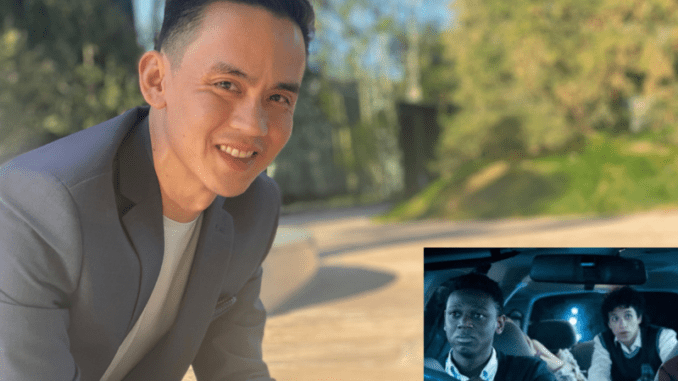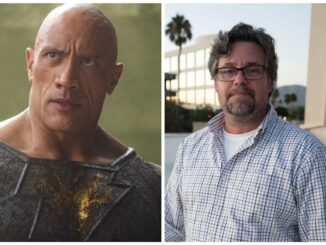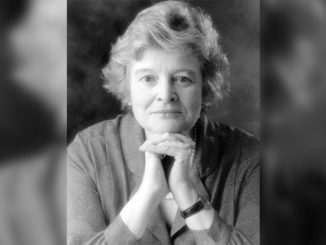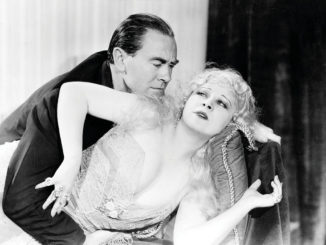
By Patrick Z. McGavin
Carey Williams’ “Emergency” is a buddy comedy steeped in mounting social anxiety.
During a wild party night, college roommates Sean (RJ Cyler) and Kunle (Donald Elise Watkins) are confronted by a series of socially compromising situations, where little is as it appears.
In his latest collaboration with Williams, the director, the picture editor Lam T. Nguyen talked about timing, social unease, and getting inside the heads of his characters.
The opening night film of this year’s Sundance Film Festival, “Emergency” is now streaming on Prime Video.
CineMontage: What attracted you to this film?
Lam T. Nguyen: It’s this love story between two guys, and that is what hooked me—this relationship we have, and the emotions these guys go through. It hits at the right tones. It’s relevant without being preachy.
It started as a short (2018). I wasn’t involved with the short. The writer KD Davila wrote an amazing script. I remember reading it, and I called Carey right away, expressing how much I loved it.
CineMontage: How beneficial artistically was it moving so quickly from your previous collaboration with Carey Williams on “R#J” (2021)?
Nguyen: We built a strong relationship on that film. We made it during the time of Covid, so we worked even closer to communicate what he wanted, his vision, and what we were doing together. We definitely started developing a short-hand and understanding of each other’s likes and dislikes.
CineMontage: Carey Williams comes to directing from an editor’s background.
Nguyen: He taught me some cool editing techniques I was able to implement into my own work. The fact he understands the process helps a lot. He gets more prepared when he films stuff. He knows we have it covered for post-production. Understanding that lingo and the editing language made it easier to relate to when we worked on a project together.
CineMontage: I imagine he gives you the freedom and latitude at the start, and you fine-tune the process editorially?
Nguyen: He has his own vision that he stays grouped with. He is also open to anything that might make the story better. He allows me to do my own first assembly of the edit, during production, and then we go to a director’s edit.
During the whole process, there were scenes we had to troubleshoot, or problem solve. He gives me his vision, or his idea, but he lets me figure out my own. I present him a scene, or two, of the story of parts of the story, of the scene, and we just go from there. Fortunately, he gives me a lot of freedom to work on my own craft as well.
CineMontage: There’s an opening sequence of white female teacher cavalierly throwing the N-word around — how much did you want to introduce an immediate sense of audience unease?
Nguyen: That was something we had to struggle with during the final edit, about how uncomfortable we want the audience to feel. We both wanted the audience to start thinking about it. We didn’t want them to be turned off by it, so I think you start off the movie with a lighter tone, the guys hanging out, seeing how they interact, and letting the audience know. That sets the tone, telling people, this is a comedy guys, and you have to relax a little bit.
When get to that scene, there is an undercurrent of uncomfortability, but there is also a sense of comedy, not comedy of making fun of it, but comedy that people can grasp in that moment without being too turned off.
CineMontage: There is a natural tension between order and freedom, expressed beautifully by the great party montage. Was it scripted like that, or did the party montage develop organically?
Nguyen: KD wrote it that way. In terms of the music, color and stuff like that, Carey sent me a list of songs that he had in mind that I would go through, and I would pick what I thought was best for each party. In bridging the montage together, my version was a little longer. Carey came in and refined it a lot more, making it nice and concise, with just the right timing.
CineMontage: The emotional heart of the movie is this complex relationship between two very different young Black men. How does the editing impact their byplay, and their interactions with each other?
Nguyen: I felt like it was definitely influential. One thing I always kept in mind in editing this movie was to do my best to be in their shoes. I wasn’t technical with a lot of things. They were more emotional edits. For instance, if it’s a scene from Sean’s perspective and about why is he so adamant about not calling the police, I try to focus on that, and try to be inside him with my edits on that. I’d balance that out with the point of view of Kunle, as he struggles over what is the right thing to do. It was a matter of scaling the lines with each scene, seeing which perspective are we going to, and which one are we ending with to push the story forward.
CineMontage: The central premise has a great screwball structure, complicated by racial, sexual and class distinctions. Is that how you perceived it?
Nguyen: When I read the script, I saw immediately how the humor is part of the comedy. Carey kept in mind during production there are screwball or silly moments, but let’s not get too carried away with it. Those moments are there to relieve the tension, because it’s such a serious topic.
CineMontage: Was that the biggest challenge you faced in getting the tempo right?
Nguyen: Absolutely. That was one of our bigger challenges. The pacing was generally there, but we needed to have the right tempo and the right pacing was definitely a challenge for each scene. Some scenes could have dragged on. In fact, in some of the original edits, they were much longer. The challenge was trying to keep it short without losing too much content, and progress the story forward.
CineMontage: A lot of the action takes place inside the van they are driving. How did that restricted point of view shape your work?
Nguyen: It was one of those claustrophobic moments. When Carey and I talked about going into production, he shared the shot list. We had to make sure we covered every angle to make sure each time we cut to the van, it doesn’t feel redundant. Carey and the cinematographer, Michael Dallatorre, did a great job of framing the guys in the van in different ways, from extreme close-ups to wide shots.
As an editor, that gave me a lot of options to work on each van scene to make it as different as possible. We didn’t want people to feel like they’re bored when they’re watching it. It’s something different every time.
CineMontage: The tone of the movie shifts from a more free associative buddy comedy to something much more unsettling in its implications about race, class and gender.
Nguyen: I remember when we first talked after reading the script, Carey said the North Star for him was last scene of the boys opening up to each other. The social issues were definitely in the back of our minds. In the editing and the scenes, I didn’t really think about that because I just focused on what the issues were for each scene. As the incidents pile on and the story changes tone throughout, I worked hard to establish the different points of view of the three main characters, Sean, Kunle and Carlos (Sebastian Chacon). By going piece by piece, that helped the big picture lend the right kind of balance.
The tone change was always in the back of our heads, but I never really thought about it in the edits, because it could throw you off emotionally. It was more about what the characters are feeling about each moment. That was my focus, and trying getting to get that right for each scene.
CineMontage: How did you get to this point in your professional life?
Nguyen: I grew up outside Denver, and started out in the business program at Denver University. I wanted to find out what I really wanted to do. In high school, I used to do a lot of student short films, just for fun. I remember editing in high school, tape to tape, literally analog editing. That’s how I started editing. What I remember was doing tape to tape editing, and I’d hit record, pause, and play. I loved how I was able to stitch something together from scratch, and make a story out of this.
I found a film program at Denver University. I had a professor there, and she threw me right into the advanced screenwriter class. It clicked for me. That led to an internship with a Denver production company, with a man named Rick Ramage. He wrote the movie, “Stigmata” (1998). I worked on his first feature as a director, “Ichabod!” (2004). I was a PA, and doing everything I wanted to do on the set. That led to me becoming a behind the scenes editor. One day, I was sitting in this corner logging footage together, and Rick asked me if I knew how to work the software. I’d done my student short with it. They said bring your computer and work on these scenes. I was nervous. I worked day and night.
Rick liked my instincts. He liked what I was coming up with. He told me here are the scenes, read the pages, and just put it together. We clicked from there. That’s how my editing career began. It was totally unexpected. Rick became my mentor.
CineMontage: What’s most exciting part of the artistic process?
Nguyen: It’s very moving pictures. It’s like a painter with a blank canvas, and that is what excites me as an editor.
You have the story written, but you have to build those words into pictures. You’re building something from scratch, and building and molding and finding the story that makes sense for the audience to watch. That’s what keeps driving me, being a part of something where you can see something from the beginning all the way to the very end.
Patrick Z. McGavin is a Chicago-based cultural journalist.





